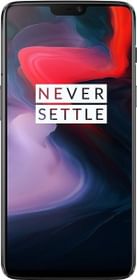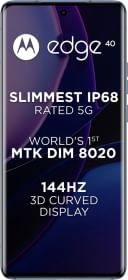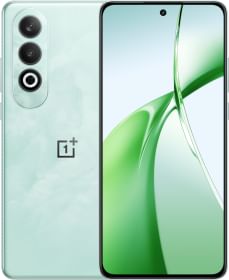LG recently stepped up its mobile game in India by launching its latest flagship device, LG G7 Plus ThinQ at a very competitive price. Like all devices in the market, this one too has its own set of contenders, the most significant one being OnePlus 6, with a nearly similar set of specifications and pricing. For all those eyeing for a good premium segment phone for their next upgrade, go through the specs wise break up for both the devices to find out which one is better!
| Model | OnePlus 6 | LG G7 Plus ThinQ |
| Display | 6.28-inch Full HD+ Super Bright AMOLED display with 19.5:9 aspect ratio. | 6.1-inch QHD+ IPS LCD display (1440×3120) |
| Processor | Octa core Snapdragon 845 processor | Octa core Snapdragon 845 processor |
| RAM | 6GB/8GB | 6GB RAM |
| Internal Storage | 64GB/128GB/256GB (non expandable) | 128GB internal storage (Expandable upto 2TB) |
| Software | Android Oreo | Android Oreo |
| Primary Camera | 16MP+20MP | 16MP+16MP |
| Secondary Camera | 16MP | 8MP |
| Dimensions and Weight | 155.70 x 75.40 x 7.75mm; weight – 177g | 153.19 x 71.9 x 7.9 mm; weight – 162 g |
| Battery | 3,300 mAh with dash charge support | 3,000 mAh, Qualcomm Quick Charge 3.0, wireless charging option |
| Connectivity | Wi-Fi, GPS, Bluetooth, NFC, USB OTG, 3G and 4G (with support for Band 40 used by some LTE networks in India) | WiFi, Bluetooth 5.0, GPS, NFC and USB 3.1 Type-C |
| Sensors on board | Compass/ Magnetometer, Proximity sensor, Accelerometer, Ambient light sensor and Gyroscope. | rear-mounted fingerprint sensor, accelerometer, gyroscope, compass, proximity sensor, and barometer |
| Price | Rs. 36,999/ Rs. 39,999 | Rs. 39,990 |
Read More: No, this is not a teaser for OnePlus 6 transparent back edition
LG G7 Plus ThinQ vs OnePlus 6 – Display
OnePlus 6 features a notched 6.28-inch Full HD+ Super Bright AMOLED display with 19.5:9 aspect ratio (1000-nit brightness), which is slightly bigger than LG’s ThinQ, that presents a 6.1-inch QHD+ IPS LCD display (1440×3120). These two smartphones come with a durable Corning Gorilla Glass 5 display protection. Both of these devices output punchy colours. With toggling a setting in the software to hide the notch, both OnePlus and LG have taken care of both notch lovers and loathers in their devices.
When it comes to handling the phone, LG G7 Plus ThinQ is more compact as compared to OnePlus 6.
LG G7 Plus ThinQ vs OnePlus 6 – Performance and Camera Quality
Processor – Both phones are powered by the Qualcomm’s high yielding flagship chipset, Snapdragon 845 processor. Performance won’t be an issue on either of the two
Camera – LG G7 Plus ThinkQ sports a 16MP (f/1.6 aperture) 16MP (wide-angle) sensor camera combo for its rear camera and an 8MP front shooter. While, the OnePlus 6 offers a 16MP+20MP primary camera combo and a single 16MP front-facing camera. LG claims its rear cameras have AI integration for real-time experience, which helps understand user needs better.
On comparing the camera of both the phones, LG G7 Plus ThinkQ has a slight edge over OnePlus 6, with more refined picture quality produced by the former.
LG G7 Plus ThinQ vs OnePlus 6 – Software Interface and Memory component
Software – LG G7+ ThinQ and the OnePlus 6 run the same OS Android Oreo, out-of-the-box. The difference lies in their software skin. LG G7+ ThinQ features LG UX 7.0 UI on top with a handful of eminent features, while the OnePlus 6 has a lighter Oxygen OS skin, that should appeal to purist.
Storage – OnePlus 6 comes in three memory configurations of 6GB RAM + 64 GB storage and 8GB of RAM+ 128GB/256GB internal storage. Like all other OnePlus phones, the memory for this one can’t be expanded.
LG G7+ ThinQ features 6GB RAM (LPDDR4X) + 128GB internal storage, that can be expanded up to 2TB with micro SD storage.
LG G7 Plus ThinQ vs OnePlus 6 – Battery and other specifications
Battery – OnePlus 6 has a better battery capacity of 3,300 mAh with dash charge support, when compared to LG G7 Plus ThinkQ, which deploys a 3,000 mAh battery with Qualcomm Quick Charge 3.0 and wireless charging option.
Other Specifications – This latest G series device by LG comes with proper waterproof certification and Boombox Speaker besides Hi-Fi Quad DAC, which delivers an enhanced audio experience. The smartphone also has a 7.1-channel DTS:3D Surround Sound support for sharper audio. A button for quick access to Google Lens is also present for performing image-based search. The device will be available in India in Aurora Black, Moroccan Blue, and Platinum grey colour options.
The OnePlus 6 is available in Mirror Black, Midnight Black and Silk White colour options. Both devices have dual SIM option.
LG G7 Plus ThinQ vs OnePlus 6 – Price and availability
LG G7 Plus ThinQ will be out for sale in India starting August 10 this year. The handset has been priced at Rs. 39,990 for Indian markets and will be a Flipkart exclusive mobile. It is important to note that consumers will be able to avail extra discount as part of Flipkart’s Big Freedom sale next month when the phone hits retail shelves.
OnePlus 6 was launched in May, 2018 in the country, and its highest memory configuration is available for Rs. 43,999. The 128GB storage option that goes directly against LG G7 Plus ThinQ costs the same – Rs 39,999.
LG G7 Plus ThinQ vs OnePlus 6 – Verdict
In less than half quarter sale period, the OnePlus 6 received overwhelming buyer response, and captured 30 percent premium phone market share in India. A lot of this success can be attributed to OnePlus’s pricing strategy for a premium segment phone. The device does costs reasonable for a phone that has all the top-of-the-line features. On the performance front, OnePlus does have specifications that will give satisfactory results, even after the novelty wears off.
As for the LG G7 Plus ThinQ, is a formidable challenger to OnePlus. In terms of specs, it will benefit from a better camera and water resistant certification.
Points in favor of OnePlus 6
- AMOLED display
- Light software
- Dash charging, bigger battery
- A cheaper variant with 64GB storage is also available.
Points in favor of LG G7 Plus ThinQ
- Better rear cameras
- Water resistant
- More compact
































